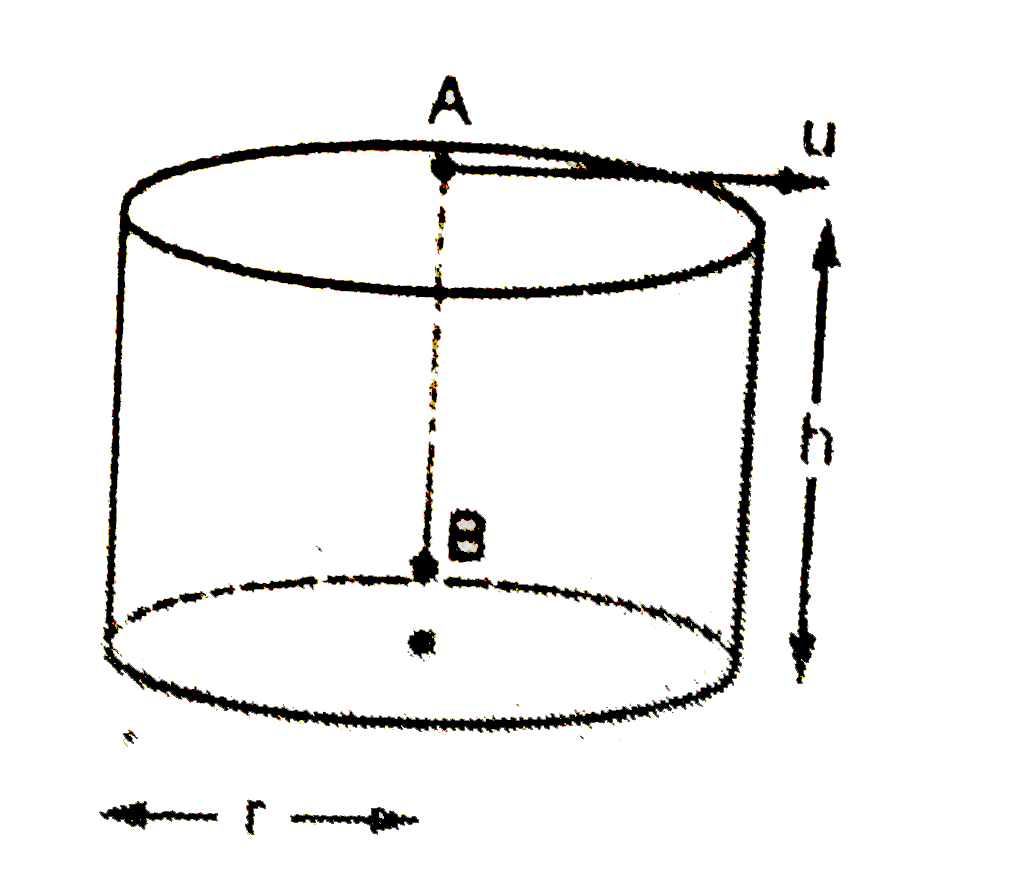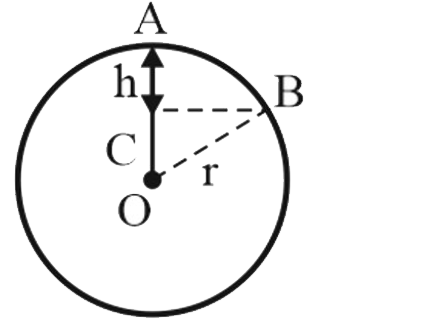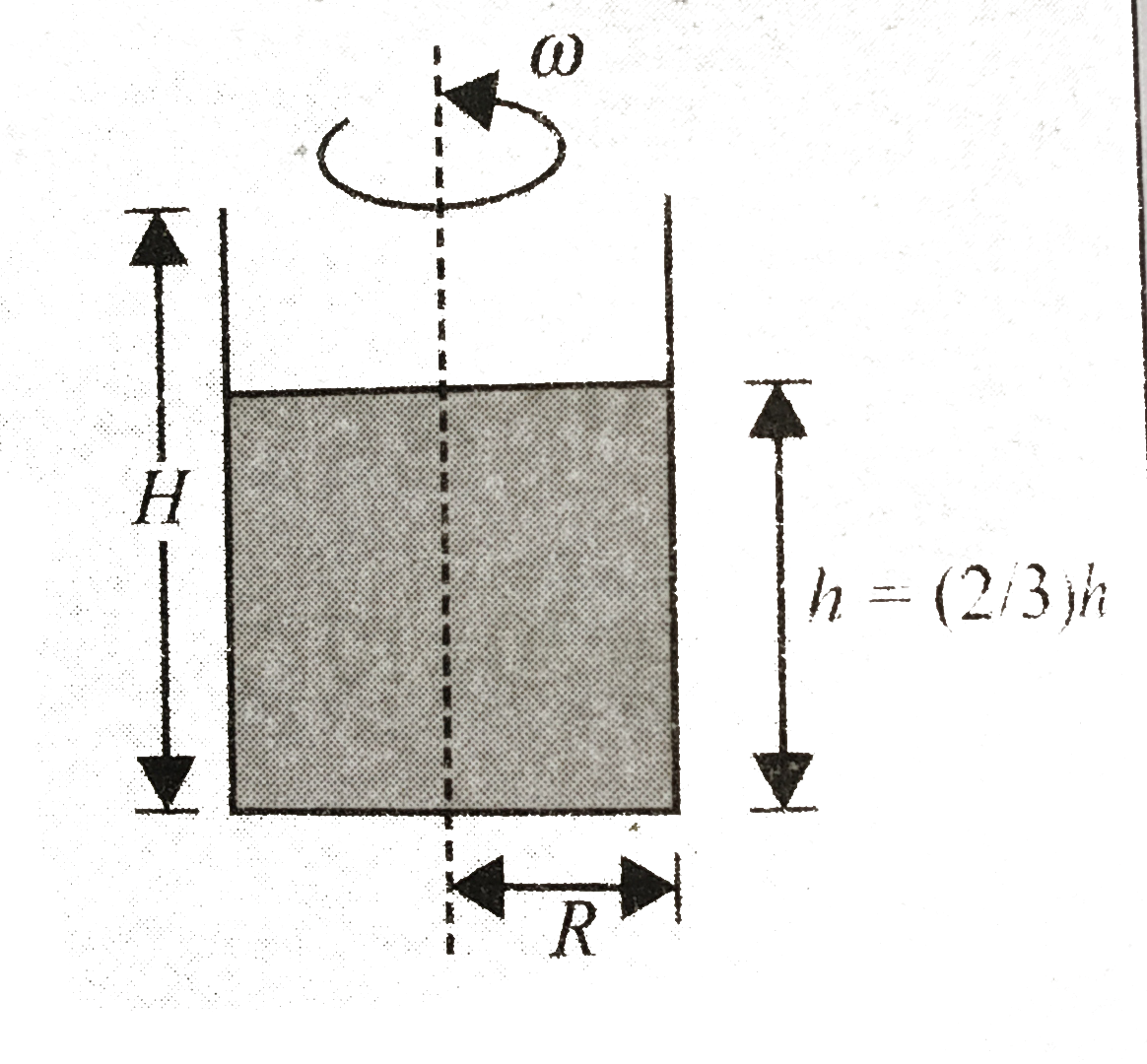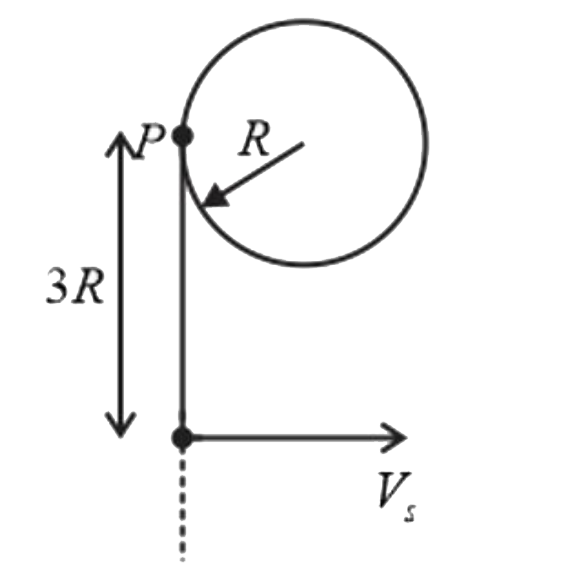A hollow vertical cylinder of radius R and height h has a smooth internal surface. A small particle is held in contact with the inner side of upper rim at a point P. It is given a horizontal speed tangential to rim. It leaves the lower rim at point Q, vertically below P. The number of revolutions made by the particle will be [Take acceleration due to gravity g]
The correct Answer is:C
To solve the problem, we need to determine the number of revolutions made by a small particle as it travels from the upper rim of a hollow vertical cylinder to the lower rim after being given an initial horizontal speed v0.
1. Understanding the Motion:
- The particle is released from point P at the top of the cylinder with a horizontal speed v0.
- It will fall vertically down to point Q at the bottom of the cylinder due to gravity.
2. Vertical Motion Analysis:
- The height of the cylinder is h.
- The initial vertical velocity uy=0 (since it starts moving horizontally).
- The vertical displacement y=h.
- Using the equation of motion:
y=uyt+12gt2
Substituting the known values:
h=0+12gt2
Rearranging gives:
t2=2hg
Therefore, the time taken to fall is:
t=√2hg
3. Horizontal Motion Analysis:
- The horizontal distance traveled by the particle while it falls is determined by its horizontal speed v0 and the time t:
Horizontal Distance=v0⋅t
Substituting t:
Horizontal Distance=v0⋅√2hg
4. Calculating the Number of Revolutions:
- The circumference of the cylinder is 2πR.
- The number of revolutions n made by the particle can be calculated by dividing the horizontal distance by the circumference:
n=Horizontal DistanceCircumference=v0⋅√2hg2πR
- Simplifying gives:
n=v02πR⋅√2hg
Final Answer:
The number of revolutions made by the particle is:
n=v02πR√2hg
- The particle is released from point P at the top of the cylinder with a horizontal speed v0.
- It will fall vertically down to point Q at the bottom of the cylinder due to gravity.
- The height of the cylinder is h.
- The initial vertical velocity uy=0 (since it starts moving horizontally).
- The vertical displacement y=h.
- Using the equation of motion:
y=uyt+12gt2
Substituting the known values:
h=0+12gt2
Rearranging gives:
t2=2hg
Therefore, the time taken to fall is:
t=√2hg
- The horizontal distance traveled by the particle while it falls is determined by its horizontal speed v0 and the time t:
Horizontal Distance=v0⋅t
Substituting t:
Horizontal Distance=v0⋅√2hg
- The circumference of the cylinder is 2πR.
- The number of revolutions n made by the particle can be calculated by dividing the horizontal distance by the circumference:
n=Horizontal DistanceCircumference=v0⋅√2hg2πR
- Simplifying gives:
n=v02πR⋅√2hg
The number of revolutions made by the particle is:
n=v02πR√2hg
Similar Questions
A hollow vertical cylinder of radius R and height h has smooth internal surface. A small particle is placed in contact with the inner side of the upper rim at a point P. It is given a horizontal speed V0 tangential to rim. It leaves the lower rim at point Q, vertically below P. The number of revolutions made by the particle will be:
View Solution
A hollow vertical cylinder of radius r and height h has a smooth internal surface. A small particle is placed in contact with the inner side of the upper rim, at point A, and given a horizontal speed u, tangentical t the rim. it leaves the lower rim at point B, vertically below A. If n is an integer thenView SolutionIn figure, a particle is placed at the highest point A of a smooth sphere of radius r. It is given slight push, and it leaves the sphere at B, at a depth h vertically below A. The value of h is
 View Solution
View SolutionA stone is projected horizontally with speed v from a height h above ground. A horizontal wind is blowing in direction opposite to velocity of projection and gives the stone a constant horizontal acceleration f( in direction opposite to initial velocity ) .As a result the stone falls on ground at a point vertically below the point of projection. Then the value of height h in terms of f,g,v is (g is acceleration due to gravity 0
View SolutionA particle of mass m and charge q is suspended from a point A with a silk thread of length l. Another particle of charge −q is fixes at a distance I from the point A such that point A and the charge -q lie in same horizontal plane. If at equilibrium , the thread makes angle 30∘ with vertical, find the mass m and tension in the thread . ( Take acceleration due to gravity as g).
View SolutionA uniformly conducting wire is bent to form a ring of mass 'm' and radius 'r', and the ring is placed on a rough horizontal surface with its plane horizontal. There exists a uniform and constant horizontal magnetic field of induction B. Now a charge q is passed through the ring in a very small time interval Δt. As a result the ring ultimately just becomes vertical. Calculate the value of g(acceleration due to gravity) in terms of other given quantities. Assume that friction is sufficient to prevent slipping and ignore any loss in energy.
View SolutionA particle of mass m moves along the internal smooth surface of a vertical cylinder of the radius R. Find the force with which the particle acts on the cylinder wall if at the initial moment of time its velocity equals v0. And forms an angle α with the horizontal.
View SolutionA cylinder of radius R=1m and height H=3m two- thirds filled with water, is rotated about its vertical axis as shown in Fig. Determine the speed of rotation when
a. the: water just starts spilling over the rim.
b. the point at the centre of the base is just exposed.
 View Solution
View SolutionA uniform circular ring of mass m and radius R is placed freely on a horizontal smooth surface as shown in figure. A particle of mass m is connected to the circumference of the ring with massless string . The particle is imparted velocity v0 perpendicular to length of string as shown. If T is tension in the string just after the particle imparted velocity , then

Acceleration of point P at this instant , isView SolutionA projectile is projected tangentially from the surface of a planet of radius R. If it is at a height of 3R at the farthest point of its trajectory, then the velocity of projection V0 is given by ( acceleration due to gravity on surface=g)
View Solution

